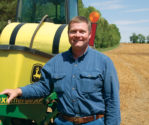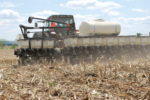Advertise Follow Us
Articles Tagged with ''Precision Planting''
New ‘Tweaks’ Pay Off For North Carolina No-Tillers
Embracing residue, better equipment and adding precision technology provides a buffer and boosts yields at Four S Farms.
Read More
What I've Learned from No-Tilling
In Search Of No-Till Planting Perfection: For Himself And Others
Years of onfarm experimentation have made no-tiller Bill Lehmkuhl a pro at drawing out prime planter performance.
Read More
Plenty Of Innovations On Display At Farm Progress Show
Technology for spraying and fertilizer application was among the equipment highlights offering potential benefits to no-tillers.
Read More
Technology, Onfarm Research Pay Off For No-Tillers
Precision planting methods, fungicides and a diverse herbicide rotation help boost the bottom line for Wisconsin growers Josh Trautman and Nick Viney.
Read More
7 No-Till Planter Tune-Up Tips
Experts explain how getting planters into tip-top shape now can save time and money later, while improving yields
Read More
Cutting-Edge Planting And Seeding Equipment
Options, flexibility and precision are hallmarks of the new planters and drills unveiled at the 2009 Farm Progress and Big Iron shows
Read More


.png?height=125&t=1731942302&width=150)









